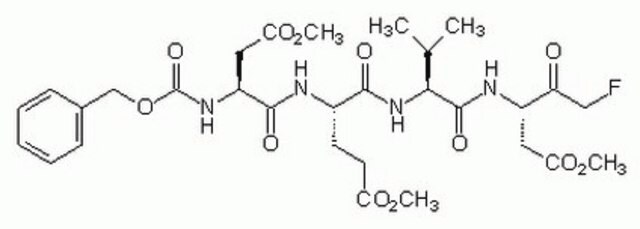SCC129
HT-22 Mouse Hippocampal Neuronal Cell Line
Mouse
Synonim(y):
HT22 Cell Line
About This Item
Polecane produkty
product name
HT-22 Mouse Hippocampal Neuronal Cell Line, HT-22 mouse neuronal cell line is a valuable cell model for studies of glutamate-induced toxicity in neuronal cells.
pochodzenie biologiczne
mouse
Poziom jakości
metody
cell based assay: suitable
Warunki transportu
dry ice
Powiązane kategorie
Opis ogólny
Opis linii komórkowej
Zastosowanie
Inquiries about licensing for commercial or other uses should be directed to:
Office of Technology Development
The Salk Institute for Biological Studies
10010 North Torrey Pines Road
La Jolla, CA 92037
Phone: (858) 453-4100 extension 1278
Email: OTD@salk.edu
Neuroscience
Toxicity
Jakość
• Cells are tested negative for infectious diseases by a Mouse Essential CLEAR panel by Charles River Animal Diagnostic Services.
• Cells are verified to be of mouse origin and negative for inter-species contamination from rat, chinese hamster, Golden Syrian hamster, human and non-human primate (NHP) as assessed by a Contamination Clear panel by Charles River Animal Diagnostic Services.
• Cells are negative for mycoplasma contamination.
Przechowywanie i stabilność
Kod klasy składowania
12 - Non Combustible Liquids
Klasa zagrożenia wodnego (WGK)
WGK 2
Temperatura zapłonu (°F)
Not applicable
Temperatura zapłonu (°C)
Not applicable
Certyfikaty analizy (CoA)
Poszukaj Certyfikaty analizy (CoA), wpisując numer partii/serii produktów. Numery serii i partii można znaleźć na etykiecie produktu po słowach „seria” lub „partia”.
Masz już ten produkt?
Dokumenty związane z niedawno zakupionymi produktami zostały zamieszczone w Bibliotece dokumentów.
Nasz zespół naukowców ma doświadczenie we wszystkich obszarach badań, w tym w naukach przyrodniczych, materiałoznawstwie, syntezie chemicznej, chromatografii, analityce i wielu innych dziedzinach.
Skontaktuj się z zespołem ds. pomocy technicznej







